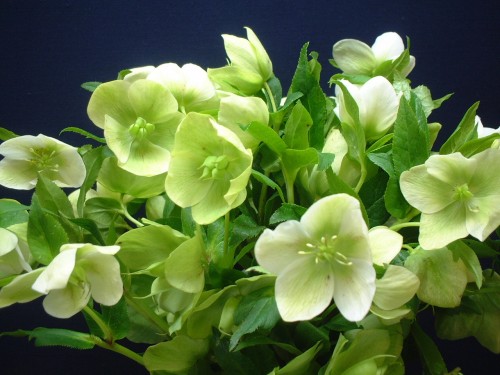






By Monique Watts for Artvoice
March is such a tease for gardeners. In the Midwest, where spring has officially sprung, residents boast fields of daffodils, tulips, and blooming forsythia. While here in the Northeast, we patiently await the thaw and scan the melting tundra for snowdrops, snow crocus, and my personal favorite, Lenten rose or hellebore. But in spite of, or perhaps because of, our spring gardening limitations, we are enthusiastically starting seeds and forcing pussy willow, forsythia, and cherry tree branches to bloom indoors. We’ve been reading garden journals, clipping articles and scanning the community calendars for plant shows.
Local garden enthusiast Cheryl Jackson has been checking the tulip bulbs she potted last fall and wintered in her basement and is looking forward to the weeks ahead when she can enjoy their blooms. She cautioned gardeners not to be fooled by these sunny days and wait until the ground has thawed and dried before trampling on the soil to start an early cleaning of the beds.
For now, we are preparing mentally and picking up all the garbage that has been uncovered as the snow melts.
What we’re excited about:
The succulent trend has gone from a slow-burning fire to smokin’ hot! From container pots on porches to green rooftops, vertical garden walls and wire topiaries to outdoor carpets of succulents, these water-wise plants are sure to be the gardener’s must have plants of the season. They thrive even in the most difficult soil conditions and are very forgiving to the weekend gardener who might not have time to water and fertilize regularly. Succulents, which include aloes and cacti, are classified as root, stem, or leaf varieties depending on where they store water and come in a variety of colors, sizes, and textures. Even though they are native to arid and desert regions, they will make great potted and seasonal transplants in the sunny areas of our gardens.
Q&A: Composting tips!
Question: A newly transplanted Buffalo resident came into the store recently and asked us about winter composting. She was looking for a way to convince her parents to continue to compost kitchen scraps even though the backyard resembled the frozen tundra.
Answer: Winter composting can be a great way to track carbon-saving footprints in the snow and add less garbage to landfills. Plan to devote at least one cubic yard to the compost receptacle in order to create enough heat to encourage microbial activity. Choosing a space near the door or against the house or another pre-existing structure to provide heat and protection from the elements on at least one side and you won’t have to trek too far out of doors each time you have a bucket to dump. Dig a hole or construct a wooden box, line the structure with corrugated cardboard or heavy layers of newspaper, and surround with hay bales to insulate. Make sure to add an insulated cover that is easily accessible when the snow starts to fall.
Adding fall leaves and horse manure is great to get the soup started. To keep the compost active, you may want to team up with a friend to produce enough scraps to fuel the heat throughout the winter. Or periodically adopt waste and grounds from a local restaurant or coffee shop.
Another great way to dispose of kitchen waste is to set up a worm bin for vermicomposting or grow your own flock of hens. They will get great joy dining of your leftover meals. One interesting blog to follow is www.compostguy.com. This Ontario resident is sharing tips on outdoor winter vermicomposting!
Read more: http://artvoice.com/issues/v9n11/sprouts_roots#ixzz10vwbI4oB
Copyright © www.100flowers.win Botanic Garden All Rights Reserved